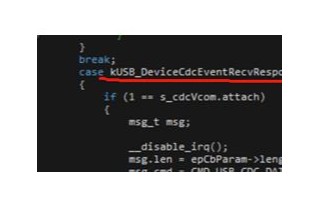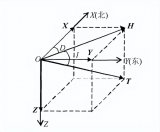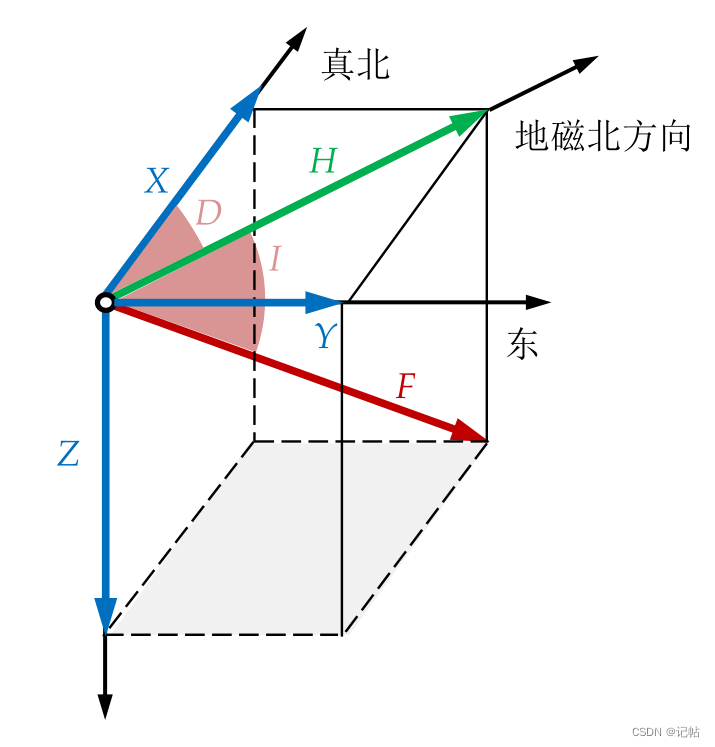第1步:所需零件
对于此项目,您将只需要一个Arduino开发板和一个MEMS磁力计即可测量地磁场。我将使用包含MC5883L 3轴磁力计的GY – 80分支板。
在继续执行该项目的源代码之前,如果您需要更多详细信息,请参见MEMS磁力计如何工作以及如何通过I2C通信连接和使用GY-80接线板,
第2步:Arduino源代码
我们首先需要做的是将草图上传到Arduino板,该板将读取来自磁力计的数据,并将其发送到Processing IDE。这是Arduino源代码:
/* Arduino Compass
*
* by Dejan Nedelkovski,
* www.HowToMechatronics.com
*
*/
#include //I2C Arduino Library
#define Magnetometer_mX0 0x03
#define Magnetometer_mX1 0x04
#define Magnetometer_mZ0 0x05
#define Magnetometer_mZ1 0x06
#define Magnetometer_mY0 0x07
#define Magnetometer_mY1 0x08
int mX0, mX1, mX_out;
int mY0, mY1, mY_out;
int mZ0, mZ1, mZ_out;
float heading, headingDegrees, headingFiltered, declination;
float Xm,Ym,Zm;
#define Magnetometer 0x1E //I2C 7bit address of HMC5883
void setup(){
//Initialize Serial and I2C communications
Serial.begin(115200);
Wire.begin();
delay(100);
Wire.beginTransmission(Magnetometer);
Wire.write(0x02); // Select mode register
Wire.write(0x00); // Continuous measurement mode
Wire.endTransmission();
}
void loop(){
//---- X-Axis
Wire.beginTransmission(Magnetometer); // transmit to device
Wire.write(Magnetometer_mX1);
Wire.endTransmission();
Wire.requestFrom(Magnetometer,1);
if(Wire.available()《=1)
{
mX0 = Wire.read();
}
Wire.beginTransmission(Magnetometer); // transmit to device
Wire.write(Magnetometer_mX0);
Wire.endTransmission();
Wire.requestFrom(Magnetometer,1);
if(Wire.available()《=1)
{
mX1 = Wire.read();
}
//---- Y-Axis
Wire.beginTransmission(Magnetometer); // transmit to device
Wire.write(Magnetometer_mY1);
Wire.endTransmission();
Wire.requestFrom(Magnetometer,1);
if(Wire.available()《=1)
{
mY0 = Wire.read();
}
Wire.beginTransmission(Magnetometer); // transmit to device
Wire.write(Magnetometer_mY0);
Wire.endTransmission();
Wire.requestFrom(Magnetometer,1);
if(Wire.available()《=1)
{
mY1 = Wire.read();
}
//---- Z-Axis
Wire.beginTransmission(Magnetometer); // transmit to device
Wire.write(Magnetometer_mZ1);
Wire.endTransmission();
Wire.requestFrom(Magnetometer,1);
if(Wire.available()《=1)
{
mZ0 = Wire.read();
}
Wire.beginTransmission(Magnetometer); // transmit to device
Wire.write(Magnetometer_mZ0);
Wire.endTransmission();
Wire.requestFrom(Magnetometer,1);
if(Wire.available()《=1)
{
mZ1 = Wire.read();
}
//---- X-Axis
mX1=mX1《《8;
mX_out =mX0+mX1; // Raw data
// From the datasheet: 0.92 mG/digit
Xm = mX_out*0.00092; // Gauss unit
//* Earth magnetic field ranges from 0.25 to 0.65 Gauss, so these are the values that we need to get approximately.
//---- Y-Axis
mY1=mY1《《8;
mY_out =mY0+mY1;
Ym = mY_out*0.00092;
//---- Z-Axis
mZ1=mZ1《《8;
mZ_out =mZ0+mZ1;
Zm = mZ_out*0.00092;
// ==============================
//Calculating Heading
heading = atan2(Ym, Xm);
// Correcting the heading with the declination angle depending on your location
// You can find your declination angle at: http://www.ngdc.noaa.gov/geomag-web/
// At my location it‘s 4.2 degrees =》 0.073 rad
declination = 0.073;
heading += declination;
// Correcting when signs are reveresed
if(heading 《0) heading += 2*PI;
// Correcting due to the addition of the declination angle
if(heading 》 2*PI)heading -= 2*PI;
headingDegrees = heading * 180/PI; // The heading in Degrees unit
// Smoothing the output angle / Low pass filter
headingFiltered = headingFiltered*0.85 + headingDegrees*0.15;
//Sending the heading value through the Serial Port to Processing IDE
Serial.println(headingFiltered);
delay(50);
}
步骤3:处理IDE源代码
在我们上传了之前的Arduino草图之后,我们需要将数据接收到Processing IDE中并绘制Digital Compass。指南针由背景图像,箭头的固定图像和指南针主体的旋转图像组成。因此,使用Arduino计算出的耳磁场的值将用来旋转罗盘。
以下是Processing IDE的源代码:
/* Arduino Compass
*
* by Dejan Nedelkovski,
* www.HowToMechatronics.com
*
*/
import processing.serial.*;
import java.awt.event.KeyEvent;
import java.io.IOException;
Serial myPort;
PImage imgCompass;
PImage imgCompassArrow;
PImage background;
String data=“”;
float heading;
void setup() {
size (1920, 1080, P3D);
smooth();
imgCompass = loadImage(“Compass.png”);
imgCompassArrow = loadImage(“CompassArrow.png”);
background = loadImage(“Background.png”);
myPort = new Serial(this, “COM4”, 115200); // starts the serial communication
myPort.bufferUntil(’ ‘);
}
void draw() {
image(background,0, 0); // Loads the Background image
pushMatrix();
translate(width/2, height/2, 0); // Translates the coordinate system into the center of the screen, so that the rotation happen right in the center
rotateZ(radians(-heading)); // Rotates the Compass around Z - Axis
image(imgCompass, -960, -540); // Loads the Compass image and as the coordinate system is relocated we need need to set the image at -960x, -540y (half the screen size)
popMatrix(); // Brings coordinate system is back to the original position 0,0,0
image(imgCompassArrow,0, 0); // Loads the CompassArrow image which is not affected by the rotateZ() function because of the popMatrix() function
textSize(30);
text(“Heading: ” + heading,40,40); // Prints the value of the heading on the screen
delay(40);
}
// starts reading data from the Serial Port
void serialEvent (Serial myPort) {
data = myPort.readStringUntil(’ ‘);// reads the data from the Serial Port and puts it into the String variable “data”。
heading = float(data); // Convering the the String value into Float value
}
-
指南针
+关注
关注
2文章
17浏览量
10855
发布评论请先 登录
相关推荐
用AIC3254来作数字拾音器,遇到的几个疑问求解
使用PCM5242连接到TMS320C5517上作数字量与模拟量的转换,如何配置寄存器参数?
现代海上的电子指南针——舰艇惯导系统
医疗机器人的“指南针”:MT6701磁编码IC实现精确导航
关键指南针-NXP USB CDC_VCOM虚拟串口例程





 如何制作数字指南针
如何制作数字指南针














评论